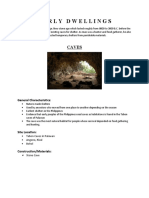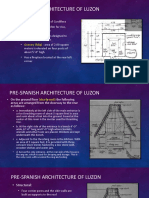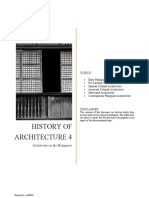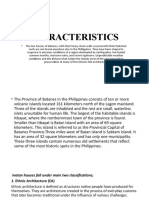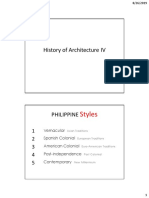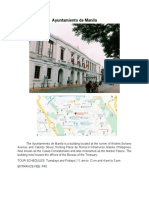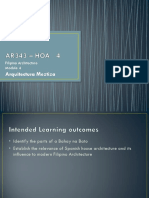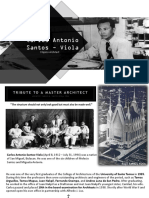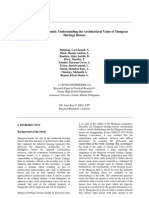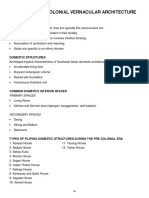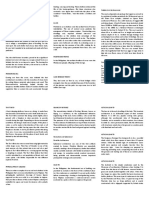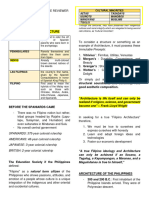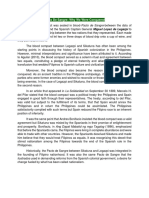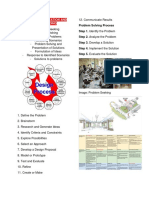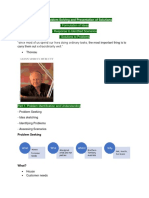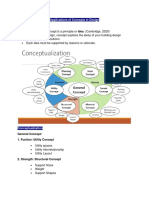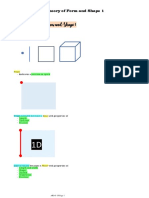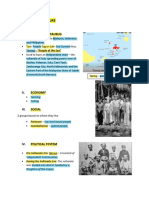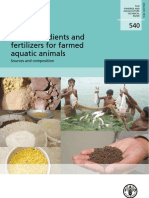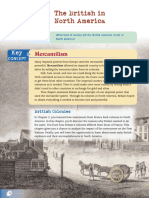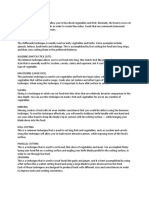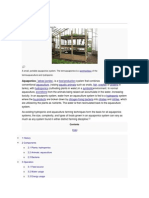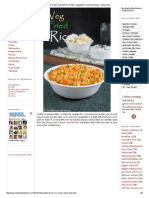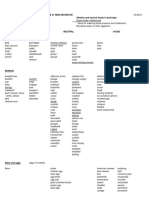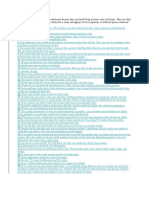0% found this document useful (0 votes)
496 views6 pagesSamal Architecture: I. Economic Activities
The document provides information on the Samal people and their architecture. The Samal are indigenous people found in parts of Mindanao and primarily engage in fishing, farming, and seaweed farming. They practice Islam but still retain folk beliefs. Their dwellings are built on stilts over shallow coastal waters or tidal flats, arranged in compact clusters for protection. Houses have nipa or bamboo walls, bamboo floors, and tree trunk posts and beams. Roofs have a simple gable structure supported by a central kingpost rather than trusses. Wood carving, known as ukkil, is also an important art form depicting motifs like birds and serpents.
Uploaded by
Yen DaCopyright
© © All Rights Reserved
We take content rights seriously. If you suspect this is your content, claim it here.
Available Formats
Download as PDF, TXT or read online on Scribd
0% found this document useful (0 votes)
496 views6 pagesSamal Architecture: I. Economic Activities
The document provides information on the Samal people and their architecture. The Samal are indigenous people found in parts of Mindanao and primarily engage in fishing, farming, and seaweed farming. They practice Islam but still retain folk beliefs. Their dwellings are built on stilts over shallow coastal waters or tidal flats, arranged in compact clusters for protection. Houses have nipa or bamboo walls, bamboo floors, and tree trunk posts and beams. Roofs have a simple gable structure supported by a central kingpost rather than trusses. Wood carving, known as ukkil, is also an important art form depicting motifs like birds and serpents.
Uploaded by
Yen DaCopyright
© © All Rights Reserved
We take content rights seriously. If you suspect this is your content, claim it here.
Available Formats
Download as PDF, TXT or read online on Scribd
/ 6



